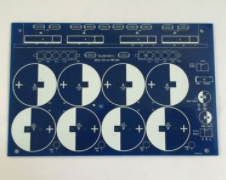What is the 20H principle?
The 20H principle refers to the 20H distance between the power layer and the ground layer. H represents the distance between the power layer and the ground layer. Of course, it is also to suppress the edge radiation effect.
The edge of the board will radiate electromagnetic interference-shrink the power layer inward, so that the electric field is only conducted in the range of the ground layer, which effectively improves the EMC. If you shrink by 20H, you can limit 70% of the electric field to the ground edge; if you shrink by 100H, you can limit 98% of the electric field.
We require the ground plane to be larger than the power or signal layer, which is beneficial to prevent external radiation interference and shield external interference to itself. Generally, when PCB design, the PCB power layer is reduced by 1mm from the ground layer to basically meet the 20H principle. .
How to reflect the 3W principle and 20H principle in PCB design?
First, the 3W principle is easily reflected in PCB design. Ensure that the center distance between the trace and the trace is 3 times the line width, for example, the line width of the trace is 6 mils. Then in order to meet the 3W principle, set the line-to-line rule in Allegro to 12mil. The spacing in the software is to calculate the edge-to-edge spacing, as shown in the figure:
Schematic diagram of 3W principle in PCB

Second, the 20H principle. In the PCB design, in order to reflect the 20H principle, we generally need to shrink the power layer by 1mm from the ground layer when the plane layer is divided. Then punch a shielding ground via hole on the 1mm inner shrink tape, 150mil one, as shown in the figure:
Schematic diagram of the 20H principle in PCB
What are the types of PCB signal lines and what are the differences?
There are two types of signal lines in PCB: microstrip line and strip line.
Microstrip line: It is a strip line that runs on the surface layer (microstrip) and is attached to the surface of the PCB. The blue part is the conductor, the green part is the insulating dielectric of the PCB, and the blue block above is the microstrip line (microstrip). line).
Because one side of the microstrip line is exposed in the air, it can form radiation or be interfered by surrounding radiation, and the other side is attached to the insulating dielectric of the PCB, so part of the electric field formed by it is distributed in the air, and the other part Distributed in the insulating medium of the PCB. But the signal transmission speed in the microstrip line is faster than the signal transmission speed in the stripline, which is its outstanding advantage.
Stripline: The stripline/double stripline that goes on the inner layer (stripline/double stripline) and is embedded in the PCB. As shown in the figure below, the blue part is the conductor, the green part is the insulating dielectric of the PCB, and the stripline is embedded in two layers. Ribbon wire between conductors.
Because the stripline is embedded between two layers of conductors, its electric field is distributed between the two conductors (planes) enclosing it, and it will not radiate energy, nor will it be interfered by external radiation. But because it is surrounded by dielectric materials (the dielectric constant is greater than 1), the signal transmission speed in the stripline is slower than in the microstrip line.
What is EMC
EMC is the abbreviation of Electro Magnetic Compatibility, which translates as electromagnetic compatibility, which refers to the ability of a device or system to work normally in its electromagnetic environment and does not constitute an inability to withstand electromagnetic disturbance to anything in the environment.
The electromagnetic compatibility of the sensor refers to the adaptability of the sensor in the electromagnetic environment, the ability to maintain its inherent performance and complete the specified functions. It contains two requirements: on the one hand, the electromagnetic interference generated by the sensor in the environment during normal operation cannot exceed a certain limit; on the other hand, the sensor is required to have a certain degree of immunity to electromagnetic interference in the environment.
What are the design methods to distinguish between analog ground and digital ground in PCB design
Generally, there are several ways to deal with analog ground and digital ground:
Separate directly, connect the ground of the digital area as DGND in the schematic diagram, and connect the ground of the analog area as AGND, and then divide the ground plane in the PCB into digital ground and analog ground, and increase the spacing;
Use magnetic beads to connect between digital ground and analog ground;
Connect the digital ground and the analog ground with a capacitor, and use the principle of blocking the direct current through the capacitor;
The digital ground and the analog ground are connected by inductance, and the inductance varies from uH to tens of uH;
A zero-ohm resistor is connected between the digital ground and the analog ground.